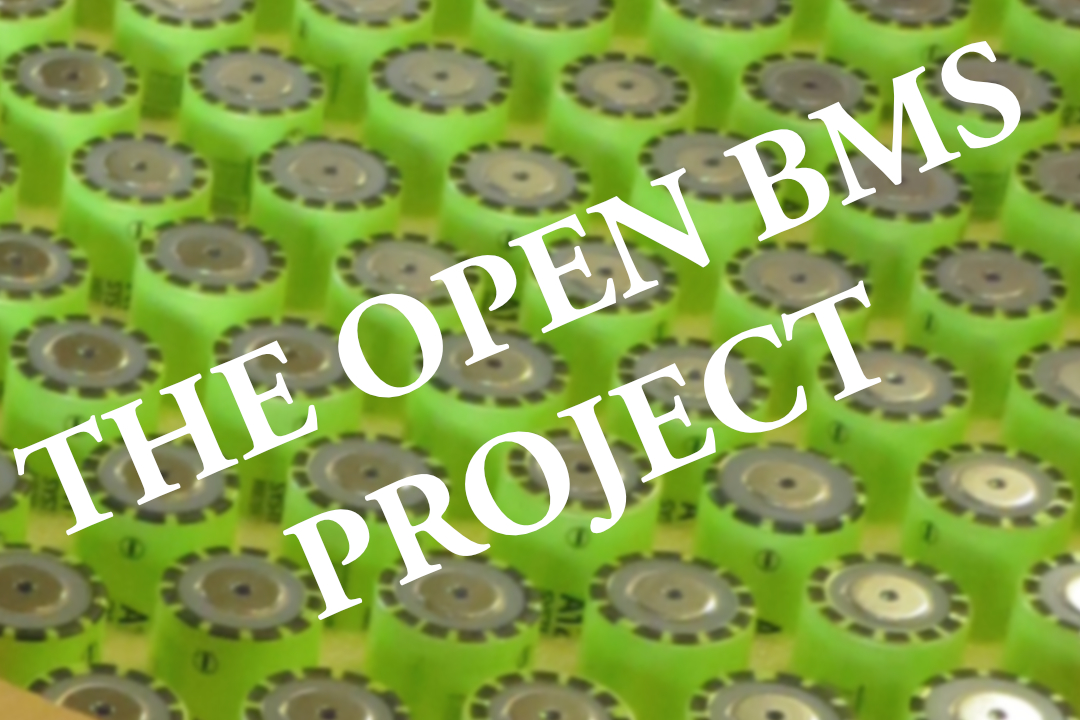The Open BMS Project is an open source and open hardware project with the goal of developing a reliable, rugged, high quality BMS (Battery Management System) for lithium-ion batteries, available for everyone. While there are many commercial suppliers of BMS, few are suitable for home builders, amateurs, student teams, prototyping, and other small-scale users with limited resources. The commercial products are typically expensive, and the design and software is typically proprietary. They are “black boxes” that cannot be modified or improved by the user.
Fundamental principles
The Open BMS Project is based on three fundamental principles that the BMS must adhere to:
- Do no harm!
- Draw equal from each cell in stand-by, and as little as possible.
- Fail in a benign, predictable manner.
These three principles may sound like nothing but common sense, but there are unfortunately many commercial products that don’t adhere to one or more of these principles.
“Functional layers”
In addition, the idea is to create a system based on “functional layers”. This will allow the user to pick only the functions he or she needs for the particular application, decreasing cost and complexity. Layers can also be removed in order to troubleshoot the system. Examples of functional layers would be cell balancing, cell reporting, high/low voltage alarm, temperature reporting, charger control, drivetrain control, charge level reporting, and visual interface, to mention a few.
Upgrading, re-use, re-purposing, recycling
Whenever possible, the design should consider the ability to upgrade the system to extend its technical life, re-using it on a new battery pack, re-purposing at the end of the technical life, and recyling at the end of its useful life. The aim is to minimize the use of natural resources and minimize the generation of e-waste (you can read more about e-waste and planned obsolescence here).
Don’t invent the wheel again!
The intent of the Open BMS Project is not to invent the wheel again, but to draw from the huge amount of knowledge already available in the electric vehicle community. There dozens of good designs collecting dusts on people’s shelves, and with coordination and more than a bit of manpower, we believe we can develop a BMS that will benefit the entire EV community. To save both money and work, it is also suggested that existing open source systems such as Arduino and/or Raspberry Pi should be used where suitable.
Who is behind this?
The initiators of the Open BMS Project is the wife-husband team Eva Hakansson and Bill Dube. Their interest in an open source BMS is quite selfish: they need a reliable BMS for their next streamliner motorcycle, the Green Envy. At the same time, they realize that a reliable, open source BMS would benefit the entire EV community.
Eva and Bill are currently located in Auckland, New Zealand, where Eva is teaching CAD and engineering drawing to the first year engineering students at the University of Auckland.

Timeline
It is difficult to set a timeline for an organic project like this, but the planned debut for Eva and Bill’s new streamliner Green Envy is in March 2020. It would be awesome to run the Open BMS in a world record attempt! In order use the system at this debut, it has to be ready in the 2nd half of 2019. The Green Envy will be shipped to Australia just after Xmas 2019, and the battery build and integration will be performed in the 2nd half of 2019. It is an ambitious target, but not totally impossible!
Join the movement
Contact Eva on contact-eva [insert “at” here] openbms [dot] net to express your interest. A website and wiki-page will be built when there is enough interest for the project.
It would be great if you could include your answers to this the list of questions that we are sending out to everyone that “heeds our call” for an open-source BMS. We are in the beginning stages of this effort and we want to figure out what our potential group members want as far as organization, what do the wish to contribute, and what they hope to receive.
1) Why are you interested in an open source BMS?
2) What is your experience of li-ion batteries and BMSs?
3) What is your skill level in electronics design and programming?
4) Do you have a design you want to contribute to the project? (hardware or on paper)
5) Do you have a vehicle in mind where you would want to use the Open BMS? If so, please give a brief overview of battery type, pack voltage, power (high power can cause an EMI problem), restrictions for size/weight/cost/etc., and other details important from a BMS perspective.
6) Do you have any interest in commercialization?
7) What are your thoughts on the design ideas presented on the webpage? (The fundamental principles, and the functional layers, for example).
8) What is your experience in Open Source in general?
9) Do you have knowledge in open source licensing? We need to decide what license the project will be released under.
10) Do you have any suggestions how to organize the project? (Wiki page, Dropbox, sub-groups, mailing list, etc.)
11) Any other suggestions and thoughts?
Looking forward,
Eva & Bill
